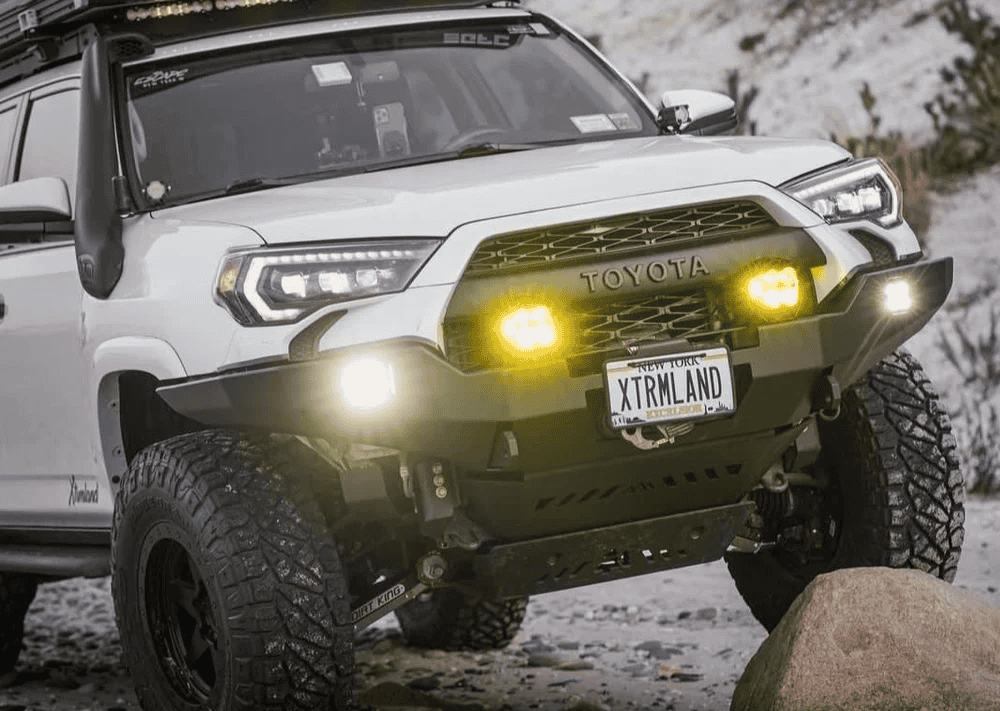Overland Vehicles

Minimalist overlanding setup is not about suffering or going without. It is about carrying only what you use often, choosing items that solve more than one problem, and arranging your vehicle so every move at camp feels natural. The goal is simple travel with fewer decisions and faster transitions. When it is time to roll, you close two latches, stow two bins, and you are gone. Fewer parts also means fewer failure points and more energy for the trail.
At the core sits weight discipline. Every kilogram affects braking distance, suspension behavior, tire heat, and fuel or range. Start with a realistic payload budget and treat it like currency. Spend on tires, recovery basics, water, shelter, heat management, and navigation. Skip spares you cannot service on the road and gear that duplicates another function.
A smart sleep system anchors comfort. A trimmed foam mattress or compact folding pad on a flat platform is stable, warm, and quick to deploy. Choose a bag or quilt rated for your coldest typical night and pair it with a liner to expand the range. Window covers add privacy and insulation while packing flat.
For cooking, think small burner, one pot, one pan, and a sharp knife. A lightweight kettle doubles for coffee and meals. Use stackable containers to portion staples and keep odors contained. A collapsible sink and a scrub pad handle cleanup without extra gadgets. If you want a stove that is always ready, mount it in a drawer that slides, lights, and locks in place.
Water planning is where minimalists win trips. Start with a daily baseline per person and a safety buffer. Use one primary tank with a simple manual pump or gravity tap to remove failure points. Carry a compact filter for top ups along the way and a separate bottle for hand washing to keep the main supply cleaner. Mark fill dates and track use so you know your real consumption.
Power should be boring and predictable. A single battery with a clean fuse block and a small charger from alternator or solar panel is enough for lights, fans, and device charging. Hardwire only the must haves and keep everything on labeled circuits. Dim LED lighting and a fan on low can change sleep quality without heavy draws. Pack a small jump starter as a final safety layer.
A recovery set should match your terrain and experience. Quality tire repair plugs, an air source, a traction board pair, and soft shackles cover most trail issues when used with good judgment. Choose a compact shovel that can actually move soil. If you add a winch, learn the fundamentals and practice on level ground before relying on it.
Plan storage by frequency of use. Daily items live closest to the door or hatch. Rarely used items go deeper. Use crates or soft bins that slide and label them clearly. A low center of gravity improves handling and keeps camp safer in wind. Straps and simple latches beat complicated mechanisms in dust and cold.
Build a routine. Stove slides out, water tap swings, utensils live in one small pouch. Keep oil, salt, and coffee within one reach so breakfast happens on autopilot. A predictable workflow prevents clutter from spreading across camp and makes teardown fast.
Mount a main switch near the rear door for quick access. Place lights where you move, not where you stand still. A small red light by the bed protects night vision. Keep a spare headlamp in the glove box for surprise repairs.
Tire choice and pressure matter more than most add ons. Choose an all terrain tire that fits within factory clearances and run the right pressures for load and terrain. Inspect sidewalls and tread before each long stretch. A tire gauge and portable compressor are non negotiable tools in a minimalist kit.
Suspension should support weight without harshness. If you are near payload limit, consider springs or air helpers and matched dampers. Keep the ride height realistic to preserve stability and range. Extra height looks good but adds drag and stress to components.
Navigation is best kept simple and redundant. Use a primary app with offline maps, a paper atlas for overview, and a basic compass as a teaching tool. Charge a compact satellite messenger for check ins where service fails. Store emergency contacts and medical info on a card in the visor.
Safety thrives on visibility and access. Fire extinguisher, first aid kit, and reflective triangle should live within one reach of the rear door. Do a gear audit at the end of each trip and remove anything you did not touch for two outings in a row. What stays earns its place.
If you prefer to invest once and start exploring with confidence, a purpose built upfit turns these principles into a clean system. Our team designs simple, serviceable layouts that keep tools reachable, water lines protected, and electrical tidy. See how we approach capability and comfort with our Overland rigs overview. When you want a focused package that matches your routes and payload, explore our Custom overland upfit options. Curious about process, materials, and handoff support before you decide? Learn more at Why choose OZK Customs.
We build rigs that stay light, pack fast, and drive as good as they look. Tell us where you go, how you camp, and what you must power. We will translate your minimalist overlanding setup into a durable layout that just works, trip after trip.
Ready to drop weight, gain reliability, and travel farther with less? Tell us how you roll and we will design a focused overland upfit that fits your routes, your crew, and your budget. Submit the form and our team will map a clean, purpose built plan tailored to your trips.
ADDRESS:
6159 E Huntsville Rd, Fayetteville, AR 72701
PHONE:
(479) 326-9200
EMAIL:
info@ozkvans.com